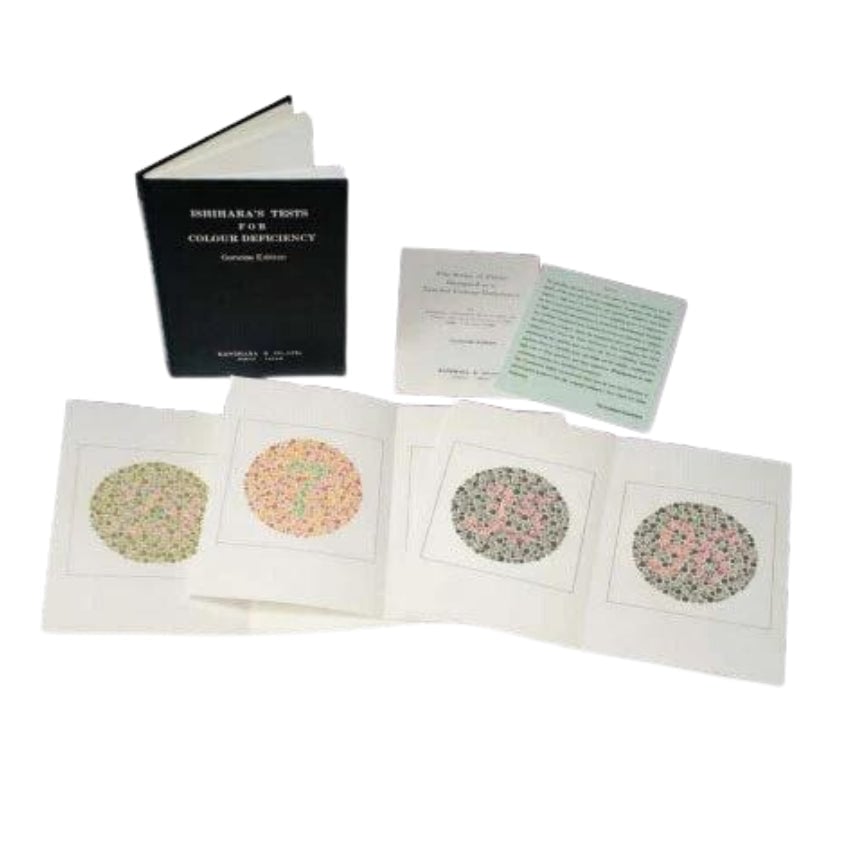The Ishihara color test is designed to assess color blindness and was created by Dr. Shinobu Ishihara. A professor at the University of Tokyo, Dr. Ishihara published the test in 1917. This test is based on the observation that in cases of red-green colorblindness, blue and yellow colors appear distinctively brighter than red and green. It contains plates with circles made of dots of varying sizes and shades, arranged randomly.
Features
- The full test consists of thirty-eight plates, but the existence of a deficiency is usually clear after fewer plates
- The Ishihara Color Charts are accepted by leading authorities worldwide as a simple and accurate test method
- The color plates are available in an album-type book for ease of handling
- The books are printed in Japan and are protected by international copyright










